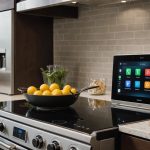Choosing the right POS system for a restaurant that offers both dine-in and drive-through service is essential for optimizing efficiency and enhancing customer experience. Seamless order processing, real-time inventory management, and customizable reporting are just a few of the must-have features that can set your establishment apart. This guide explores the essential attributes your POS should possess to effectively meet the unique demands of both dining options while driving growth and satisfaction in your business.
Key Features of a Restaurant POS System
Understanding the POS system features is crucial for enhancing restaurant technology and operational efficiency. A well-rounded system integrates several functionalities that streamline restaurant operations.
Also read : Crafting the perfect high-volume bar: the ideal setup for successful cocktail creation
Order Management
Efficient order management is vital, especially for both dine-in and drive-through services. A robust POS system should allow seamless order tracking, ensuring that kitchen staff and servers are synchronized. This minimizes delays and enhances customer satisfaction.
Payment Processing
An essential feature of any POS system is its payment processing capabilities. It should support multiple payment types, including credit and debit cards, mobile payments, and contactless options. This flexibility ensures a smooth transaction experience for customers and reduces wait times.
Also to read : Essential elements for choosing the ideal coffee supplier for your artisan café
Key Functionalities to Consider
- Real-time inventory tracking
- Customizable menu options
- Comprehensive reporting tools
A quote from a restaurant manager highlights the importance: "Implementing a versatile POS system transformed our service speed and accuracy, elevating our overall customer experience."
Incorporating these POS system features not only boosts restaurant technology but also significantly enhances operational efficiency. With the right tools, restaurants can streamline operations, improve customer service, and ultimately increase profitability.
Customer Relationship Management in POS Systems
Understanding the role of Customer Relationship Management (CRM) is essential for enhancing the customer experience in restaurants. Implementing CRM features within a POS system allows businesses to engage with customers more effectively. By integrating loyalty programs, restaurants can incentivize repeat visits and foster brand loyalty.
Enhancing Customer Experience
CRM features in POS systems enable restaurants to personalize interactions, thus improving customer engagement. By collecting and analyzing customer data, staff can tailor services to individual preferences, boosting satisfaction and fostering loyalty.
Implementing Loyalty Programs
Utilizing a POS system to manage loyalty programs is a strategic move for many restaurants. These programs can track customer purchases and offer rewards, encouraging repeat business. A restaurant owner stated, "Our loyalty program, integrated with our POS, has significantly increased our customer retention rates."
Data Analysis for Improved Service
POS systems equipped with CRM capabilities collect valuable customer data. This data, when analyzed, provides insights into customer preferences and behavior. Restaurants can use this information to refine their offerings and enhance service quality.
| CRM Feature | Benefit |
|---|---|
| Personalization | Tailored customer experiences |
| Loyalty Programs | Encourages repeat visits |
| Data Analysis | Insights for service improvement |
Incorporating CRM features into POS systems is a powerful approach to boosting customer engagement and loyalty.
Inventory Tracking and Management
Understanding the nuances of inventory control is vital for any restaurant aiming to optimize operations. Real-time inventory tracking allows businesses to monitor stock levels accurately, ensuring that ingredients are always available without overstocking. This kind of precision is crucial for maintaining a balanced supply chain and minimizing waste.
Integration with POS Systems
Integrating inventory management with POS systems streamlines operations by automatically updating stock levels with each sale. This integration not only saves time but also reduces human error, providing accurate data for decision-making. Restaurants can utilize this data to adjust menu planning and ensure that popular items are always in stock.
Impact on Cost Control
Effective inventory control directly influences cost management. By maintaining optimal stock levels, restaurants can reduce waste and avoid unnecessary expenses. This efficiency translates into better menu pricing and increased profitability. A restaurant manager noted, "Our POS-integrated inventory system has significantly cut down on waste, improving our bottom line."
| Inventory Feature | Benefit |
|---|---|
| Real-time tracking | Accurate stock levels |
| POS integration | Streamlined operations |
| Cost control | Reduced waste and expenses |
Implementing robust inventory management practices ensures that restaurants can operate efficiently, benefiting both the business and its customers.
Integration Capabilities of POS Systems
Exploring the integration capabilities of POS systems reveals a world of opportunities for enhancing operational synergy. By incorporating third-party applications, restaurants can streamline various processes, from order delivery to financial management.
Popular Third-Party Integrations
Restaurants often integrate with a variety of third-party applications to boost efficiency. Common integrations include delivery services like Uber Eats and Grubhub, which expand customer reach. Accounting software such as QuickBooks can also be linked to simplify financial tracking and reporting.
Benefits of Seamless Integration
Seamless software integration significantly enhances operational efficiency. By connecting POS systems with third-party applications, restaurants can automate routine tasks, reduce manual errors, and improve data accuracy. This leads to time savings and allows staff to focus on customer service.
"Integrating our POS with delivery platforms and accounting tools has transformed our operations," shared a restaurant owner, highlighting the practical benefits.
Case Studies on Successful Integration
Several restaurants have successfully leveraged software integration for operational gains. A notable example is a café that integrated its POS with a popular delivery service, resulting in a 30% increase in orders. Another case involved a fine-dining restaurant using integrated accounting software to cut bookkeeping time by half.
- Delivery Services: Expands customer base
- Accounting Software: Streamlines financial processes
- Operational Synergy: Boosts overall efficiency
Implementing these integration capabilities can significantly elevate a restaurant's performance.
User Experience and Ease of Use
Exploring the user experience of a POS system is crucial for enhancing staff efficiency and customer satisfaction. A user-friendly interface plays a pivotal role in boosting staff productivity by simplifying complex tasks and minimizing errors. This ease of use ensures that employees can focus more on delivering excellent service rather than grappling with technology.
Importance of a User-Friendly Interface
A user-friendly interface is essential for restaurant operations. It reduces the learning curve, allowing new staff to become proficient quickly. This, in turn, leads to a more productive workforce, as employees spend less time understanding the system and more time on customer service.
Training Requirements and Resources
Effective staff training is vital for the successful adoption of any POS system. Comprehensive training resources, such as tutorials and hands-on sessions, equip employees with the skills needed to navigate the system confidently. Proper training ensures that staff can leverage all POS features, enhancing overall operational efficiency.
"Our staff quickly adapted to the new POS system due to its intuitive interface and robust training resources," noted a restaurant manager.
Impact on Customer Satisfaction
The ease of use of a POS system directly impacts customer satisfaction. A seamless transaction process and accurate order handling improve the dining experience, fostering repeat business and positive reviews.













